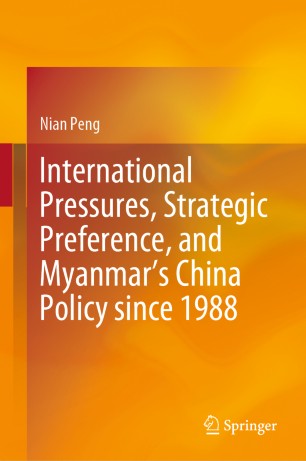

Most ebook files are in PDF format, so you can easily read them using various software such as Foxit Reader or directly on the Google Chrome browser.
Some ebook files are released by publishers in other formats such as .awz, .mobi, .epub, .fb2, etc. You may need to install specific software to read these formats on mobile/PC, such as Calibre.
Please read the tutorial at this link: https://ebookbell.com/faq
We offer FREE conversion to the popular formats you request; however, this may take some time. Therefore, right after payment, please email us, and we will try to provide the service as quickly as possible.
For some exceptional file formats or broken links (if any), please refrain from opening any disputes. Instead, email us first, and we will try to assist within a maximum of 6 hours.
EbookBell Team

4.1
80 reviewsThis book mainly explored the driving forces and evolvement of Myanmar’s China policy since 1988 by adopting a neo-classical realist apporach, an emerging theoretical paradigm aiming at analyzing state’s foreign behaviour by connecting systemic and unit variables which refers to external environments and domestic restraints respectively. It is the first book that seeks to give a theoretical explanation of Myanmar’s diplomacy, thereby bridging the gap from basic research to the deep one with theories. It also introduced the concept of strategic preference and argued that the competing strategic preference that the Burmese leaders have, namely “integration” and “isolation”, determines Myanmar’s responses to China in the Post-Cold War era, which not only demonstrates the neo-classical realism as an useful instrument of looking into state’s foreign policy and deepens the understanding on Myanmar-China relations.The main content of this book is divided into seven parts, in which the first chapter introduces the background, the present study on Myanmar’s China policy and China’s Myanmar policy, the analytical framework, and the arrangement of the content. Chapter 2 focuses on the roots and changes of Myanmar’s competing strategic preference as well as its influences on Myanmar’s foreign policy. The following four chapters examine the international pressures and benefits imposed by systemic imperatives, and Burmese leaders’ specific strategic preference since 1988, and investigate Myanmar’s policy towards China in different periods. Finally, it provides a comprehensive conclusion that outlines and reviews the origins and evolution of Myanmar’s China policy, and predicts its future directions.This book is suitable for the graduates and experts who are interested in international relations, the Asian studies and neo-classical realism in particular, and Myanmar politics and foreign relations, as well as China’s relation with neighboring countries.